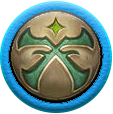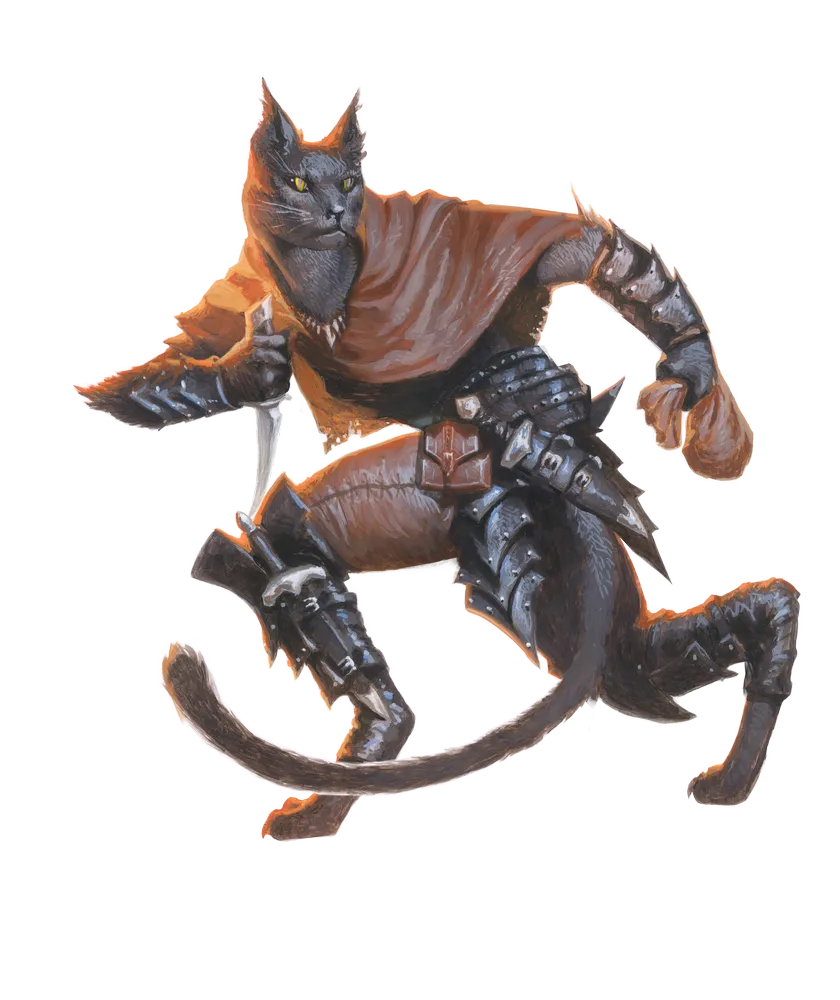There is a Legacy version
here.

Catfolk
 Uncommon Catfolk Humanoid Source Player Core 2 pg. 9 1.1PFS Note
Uncommon Catfolk Humanoid Source Player Core 2 pg. 9 1.1PFS Note All Pathfinder agents have access to the catfolk ancestry
Catfolk are highly social, feline humanoids prone to curiosity and wandering.Curious and gregarious wanderers, catfolk combine the features of felines and humanoids in both appearance and temperament. They enjoy learning new things, collecting new tales and trinkets, and ensuring their loved ones are safe and happy. Catfolk view themselves as the chosen guardians of natural places in the world and are often recklessly brave, even in the face of overwhelming opposition. They believe that strong communities, breadth of experience, and continual self-improvement aid them in this fight.
As quick as their reflexes are, catfolk have quicker tempers, shifting from effusive glee to aggrieved fury in an instant. Like mundane felines, catfolk involuntarily purr when pleased and growl when surprised or angry. If you want a character who is curious, brave, friendly, and nimble in body and mind, you should play a catfolk.
You Might...
- Demonstrate genuine interest by asking a lot of enthusiastic questions.
- Avoid interpersonal conflict by giving someone a cold shoulder or by simply leaving the area.
Others Probably...
- Think you monopolize conversations with your incessant queries or opinions.
- Ascribe more emotion than you feel to your involuntary purrs or growling.
Physical Description
Although all catfolk walk upright and have soft fur, a tail, large ears, and vertical pupils, they show at least as much variety as ordinary felines. Catfolk have nimble fingers with short claws that are usually retractable.
Catfolk mature quickly and are able to walk at only a few months old, but they start their careers at roughly the same age as humans do and live to be 60 or 70 years of age.
Society
Catfolk call themselves amurruns, although many consider this name to be private. They raise their children in large extended families, where they are given latitude to explore and get into trouble from a remarkably young age. Catfolk learn a trade in a loose apprenticeship, and the majority learn several trades over their lives.
Catfolk societies are often led by an appointed leader who speaks on behalf of the community and mediates disputes. They prefer to deal with grievances by making an elaborate showing of disinterest, or even leaving a community for a time so the problem can die away.
Beliefs
Most catfolk believe they were uplifted from great primeval cats to confront the evil abominations despoiling natural places and laboring to unmake reality. Many, however, enjoy the freedom to travel and like to set their own paths in life. Religious catfolk most often practice a nebulous form of animism, appeasing the spirits of the land and the creatures they hunt to preserve the natural order.
Popular Edicts travel the world, protect natural places, fastidiously maintain your appearance
Popular Anathema leave questions unanswered
Names
Catfolk are given short names in their youth. Adolescent catfolk are free to choose a different name when they first leave home.
Sample Names
Alyara, Crinto, Drewan, Espes, Ferrus, Gerran, Halhat, Hoya, Ruun, Sevastin, Tespa, Yonsol, Zakkar, Zathra
Catfolk Mechanics
Hit Points
8
Size
Medium
Speed
25 feet
Attribute Boosts
Dexterity
Charisma
Free
Attribute Flaw
Wisdom
Languages
AmurrunCommonAdditional languages equal to your Intelligence modifier (if it's positive). Choose from
Draconic,
Elven,
Gnomish,
Goblin,
Halfling,
Iruxi,
Jotun,
Fey, and any other languages to which you have access (such as the languages prevalent in your region).
You can see in
dim light as though it were
bright light, so you ignore the
concealed condition due to dim light.
Land on Your Feet
When you
fall, you take only half the normal damage and don't land
prone.